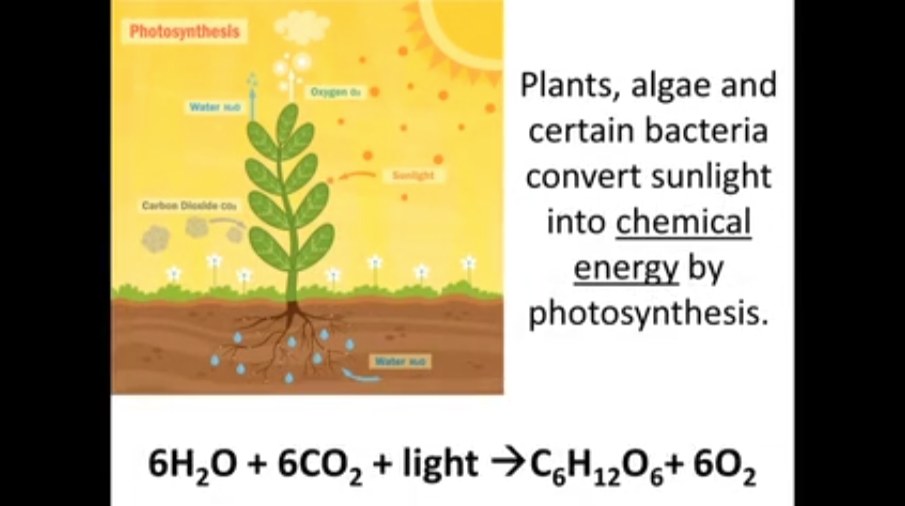Measuring Photosynthesis of a Leaf
All organisms, from tigers to tulips, need energy. Even bacteria need energy. To get this energy, organisms access stored energy by eating food. Cows eat grass. Lions eat cows. But if you look closely at it, all the food energy actually can be traced back to the light from the sun.
All energy we have available on earth actually comes from the sun. When sun falls on the trees and grass, they use it to make chemical energy it can use later for things it needs. That energy is transferred to the animals that eat the plants.
The main part of the oxygen cycle on earth is photosynthesis, which converts sunlight into energy for the plant and oxygen for our atmosphere. Plants, green algae and a number of micro-organisms take light, six molecules of water, six molecules of carbon dioxide to make one sugar molecule and six oxygen molecules.
For plants, carbon dioxide enters through the breathing pores on the surface of a plant's leaves (called the stomata), and the water and nutrients enter through the roots. The oxygen gas leaves the leaf through the stomata pores and the sugar (glucose) is distributed to the rest of the plant.
We’re going to measure the rate of photosynthesis of a plant. You basically take small bits of a leaf like spinach, stick it in a cup of water that has extra carbon dioxide in it, and shine a light on it. The plant will take the carbon dioxide from the water and the light from the lamp and make oxygen bubbles that stick to it and lift it to the surface of the water, like a kid holding a bunch of helium balloons. And you time how long this all takes and you have the rate of photosynthesis for your leaf.
Once you’ve got this experiment working, think about other things that might affect the rate of photosynthesis. What about the color of the light (is red better, or yellow, blue, green, UV…?) Does it matter how far the light is from the heat sink? Does the type of leaf matter?
Lab Time:
- Cut out small samples using hole punch
- Place leaves in a cup of water (or use a water-filled syringe)
- Get the leaves to sink by pressing out all air bubbles (plunge syringe several times).
- Add a tsp of a carbon source (like baking soda)
- Place a heat sink on top of the first cup (like another clear cup of water)
- Place in direct sunlight or under a lamp
- Your leave “chads” should rise to the surface if they are generating enough oxygen bubbles!
- Try different leaves, add more/less carbon, change water temp… and have fun!
Additional Notes for the Lab:
Make sure you don’t shine your light directly on the leaf or the glass of water it’s in, or you’ll be adding heat, not just light, to your experiment. Use a clear glass for the main cup of water, and then put a second glass of water on top, and shine your light through the top glass into the lower glass. We don’t want to heat up the water with the leaves because that will change our experiment.
The leaf will absorb energy from the light and convert H2O to make oxygen bubbles. When enough oxygen bubbles are attached to the leaf, the leaf floats to the top and you can time how long it takes that leave to float to the drop from when you first drop it in and switch on the light.
Also, not every kind of leaf is going to work for this experiment. My favorite leaf to use is spinach, but again, go ahead and try different varieties. You know you’ve done it right when the leaves fall to the bottom of the syringe. You can also try pressing the leaf underwater between your thumb and the side of the glass, or leaving it in a dark cupboard overnight to soak in the water. If it still doesn’t sink, discard it and try a different kind of leaf.
Exercises:
1. Plants, algae and certain bacteria convert sunlight _______________________ into by photosynthesis.
2. Write out what each one of these means in plain everyday words:
6 H2O + 6 CO2 + light --> C6H12O6 + 6 O2

